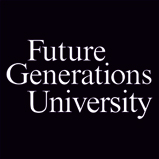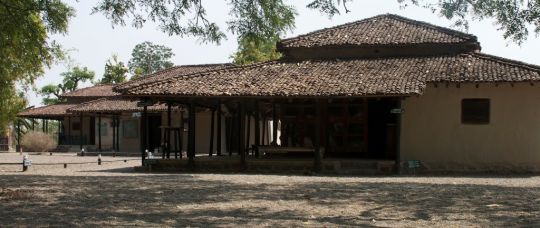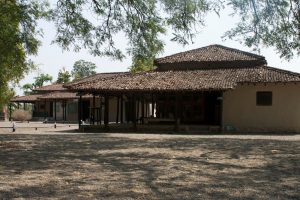 |
|
Gandhi’s ashram in Sevagram, India– participants in the certificate course Equip Yourself to Make the Change You Wish to See spend part of their course time here for an in-depth learning experience
|
Mahatma Gandhi coined the term swaraj (literally, self-rule, though he preferred to translate it as self-control) to describe the growing capacity of a population to determine its future. Gandhi was in South Africa at the time, and the idea of people rising up with internal nonviolent energy for political independence was a new concept in the world. His idea was that people could take control of their own destiny through taking control of the most basic functions of life. Colonialism was a loss of control, but so too was poverty, caste, and illness. From taking control over lives came true freedom; it allowed people to own their futures.
The Mahatma was not was not internationally recognized when he came to believe in swaraj. He wasn’t even in India or thinking of the independence of India, but wanted to improve a few lives in an intentional community on a very marginal piece of land in South Africa. What would grow into a freedom movement for one-fifth of the world’s population, indeed launch all the freedom movements of the 20th Century, began on a marginal piece of land and freedom for a few.
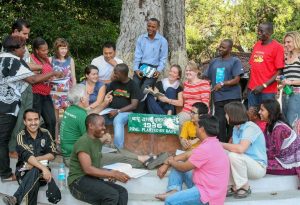 Swaraj gave part of the answer, “a morality based in Truth” he often called it, a way by which people could define their destiny. His concern as his awareness grew was not simply opposition to the British Empire, but to the discrimination and poverty which underlay oppression. Fundamental social change was the objective, and the physical context for this control of destiny was the sparse land of his utopian South African Phoenix Colony. These then seeded an idea that would scale up into one of the world’s most powerful forces.
Swaraj gave part of the answer, “a morality based in Truth” he often called it, a way by which people could define their destiny. His concern as his awareness grew was not simply opposition to the British Empire, but to the discrimination and poverty which underlay oppression. Fundamental social change was the objective, and the physical context for this control of destiny was the sparse land of his utopian South African Phoenix Colony. These then seeded an idea that would scale up into one of the world’s most powerful forces.
In some of his writing after the movement had started to expand in India, Gandhi expanded the term to gram swaraj, which is community-based freedom. Gram swaraj generates sustaining energy for the community from inside and with it self-correcting direction. It is inspired and regulated by satyagraha, the energy of Truth. Gandhi argued that the true forces that bring change in the lives of people come not from the marketplace, not from armies, not from a religion, not from political process, but from knowledge of Truth that is internalized and adhered to so that it continually corrects action. These forces that begin inside each individual then redefine society to bring authentic help to all people.
His spinning wheel visibly conveyed this message on the importance of process and the search for Truth. Each individual turning his or her wheel gave evidence of self-potential and direction. The act of spinning used resources grown in that place, locally-grown cotton, locally-grown wood that made the wheels. When people wore khadi cloth they showed proof that a becoming life could be made by them. Done collectively, homespun khadi showed that India could weave a new life, using threads of local resources from one direction, massive energy of the villages from the other. Actually wearing these clothes of their own making as flags of self-reliance as they marched, India’s people gave evidence that they were dressing in a new way: their way. Do that, and from that other freedoms will grow. Swaraj was to strengthen India with tightly wound new fiber to pull apart deep forces of oppression: caste, poverty, ignorance, fear of leprosy, and gender discrimination.
Today, as military powers send soldiers to distant lands to free people and label the liberators “peacemakers,” and as corporations are freed to cross the world for cheap labor arguing that they create local development by creating jobs that bind people to global labor imbalances, the question must be asked (even if it cannot be answered): what is freedom? While freeing people from oppression and providing jobs are both freedoms, going toward freedom in the way that “peacemakers” and corporations pursue misses a core principle that guided Gandhi: that truth was in the process, the never-ending journey faithful to the operating principles.
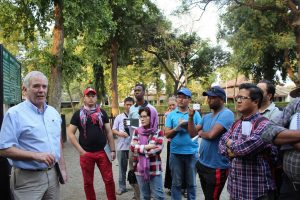 |
| Professor Taylor teaching Gandhi’s methods of social change at the Mahatma’s ashram in Sevagram, India |
Freedom is not given to people. Freedom is when people come together as communities to rule themselves. Joining together as communities not only liberates from these outside forces, but also it grows a momentum that, in his vision, would reach all. His was a vision for a new justice through new means: “If we are to make progress, we must not repeat history but make new history. We must add to the inheritance left by our ancestors.”
Inarguably, significant differences exist now than those present in people’s lives in Gandhi’s day. As such, it is helpful to focus just on that which Gandhi viewed as foundational: Truth. With information and instant access to anything people want to hear—information is awash now over the world pummeling people with falsehoods and facts. The worship of Truth is possibly more essential now than in Gandhi’s time. The response needed is not to abandon the quest and turn to fundamentalisms and black and whites, but to work with all the nuance that of how what is true in one locale is not in another, how what is true from one person’s perspective is not from another’s. Truth is understood through having a process to engage the facts and falsehoods. And so, a more complex set of principles is needed. To unpack in greater detail the principles Gandhi actually did use; we state them in the context of SEED-SCALE’s four principles:
 We can all still take inspiration from his perseverance and learn the lessons he left behind in his philosophy and methods. The application is timeless and invaluable in preventing history from repeating itself. By participating in Future Generations certificate course, “Equip Yourself to Make the Change You Wish to See,” you can learn Gandhian social change methods right where the Mahatma himself taught them to his followers, at his Sevagram ashram in central India.
We can all still take inspiration from his perseverance and learn the lessons he left behind in his philosophy and methods. The application is timeless and invaluable in preventing history from repeating itself. By participating in Future Generations certificate course, “Equip Yourself to Make the Change You Wish to See,” you can learn Gandhian social change methods right where the Mahatma himself taught them to his followers, at his Sevagram ashram in central India.
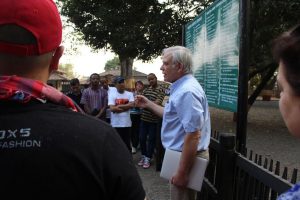 This week’s blog contributed by Future Generations founder and current president and professor, Daniel Taylor. Daniel has been engaged in social change and conservation for four decades with a focus on building international cooperation to achieve ambitious projects. He founded the nine Future Generations organizations worldwide (including the accredited Future Generations Graduate School). He also founded and led The Mountain Institute. In 1985, after providing the scientific explanation for the yeti, he led creating Nepals Makalu-Barun National Park, then, in close partnership with the Tibet Autonomous Region, Chinas Qomolangma (Everest) National Nature Preserve and Four Great Rivers Nature Preserve protecting one-seventh of Chinas forest reserves. He is one of the synthesizers of the SEED-SCALE method, an understanding of social change initiated by a UNICEF task force he co-chaired from 1992-95. Since 1995 he continued to lead global field trials of SEED-SCALE and is senior author of Just and Lasting Change: How Communities Can Own Their Futures and Empowerment: From Seeds of Human Energy to a Scale of Global Change. Among his honors, Taylor was knighted by the King of Nepal Gorkha Dakshin Bau III; was made the first Honorary Professor of Quantitative Ecology of the Chinese Academy of Sciences; and was decorated with the Order of the Golden Ark by HRH Prince Bernhard of The Netherlands.
This week’s blog contributed by Future Generations founder and current president and professor, Daniel Taylor. Daniel has been engaged in social change and conservation for four decades with a focus on building international cooperation to achieve ambitious projects. He founded the nine Future Generations organizations worldwide (including the accredited Future Generations Graduate School). He also founded and led The Mountain Institute. In 1985, after providing the scientific explanation for the yeti, he led creating Nepals Makalu-Barun National Park, then, in close partnership with the Tibet Autonomous Region, Chinas Qomolangma (Everest) National Nature Preserve and Four Great Rivers Nature Preserve protecting one-seventh of Chinas forest reserves. He is one of the synthesizers of the SEED-SCALE method, an understanding of social change initiated by a UNICEF task force he co-chaired from 1992-95. Since 1995 he continued to lead global field trials of SEED-SCALE and is senior author of Just and Lasting Change: How Communities Can Own Their Futures and Empowerment: From Seeds of Human Energy to a Scale of Global Change. Among his honors, Taylor was knighted by the King of Nepal Gorkha Dakshin Bau III; was made the first Honorary Professor of Quantitative Ecology of the Chinese Academy of Sciences; and was decorated with the Order of the Golden Ark by HRH Prince Bernhard of The Netherlands.
